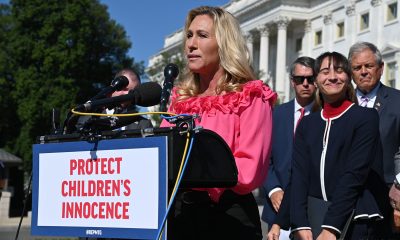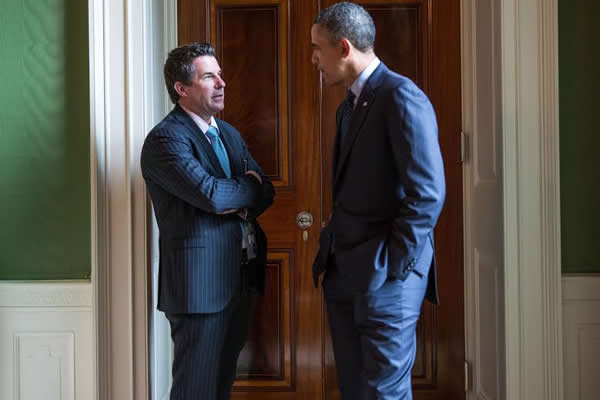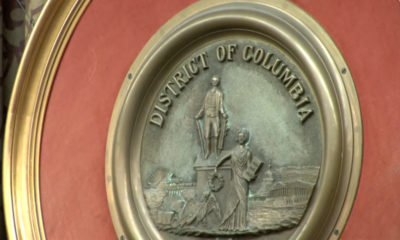Opinions
Frank Kameny’s pioneering gay journey
From WWII trenches to the stars to a revolution
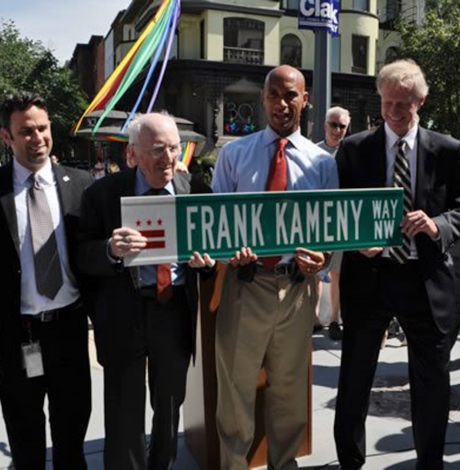
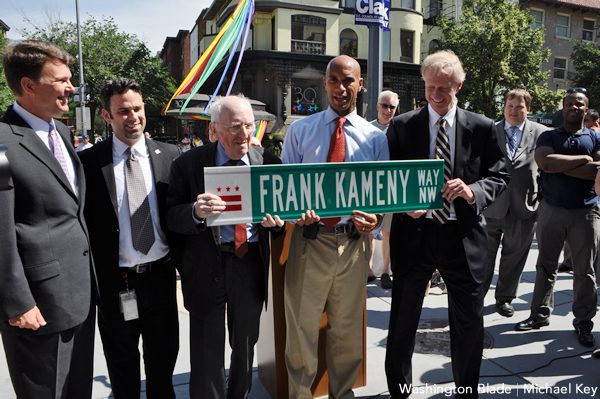
The letter began, “The United States federal government has received information indicating immoral conduct on your part.” It demanded, “Have you ever engaged in acts of anal copulation, sometimes referred to as sodomy or anal sodomy? If yes, approximately how many such acts have occurred? … Dates of those acts? Were they in public? With how many people?”
The letter’s author, Eric Cervini, Ph.D., added, “Just kidding. But in the 1950s and 1960s, the US government really did send letters just like this one.” He sent me the letter with a copy of his new biography of gay rights pioneer Frank Kameny, The Deviant’s War, from Farrar, Straus and Giroux (June 2, 2020).
Such interrogations continued for decades. My friend Alan Savada, who hired Kameny in the early 1980s for help with a security clearance, was a cartographer with the Defense Mapping Agency when he faced similar questions. They were delivered orally in his case. I hired Kameny during a security investigation I underwent at the Labor Department, though employees at civilian agencies had an easier time by then.
I met Kameny in the late 1970s when I was a college student and he was a speaker on gay rights. He was 53. But the movement elder I would know from then until his death was once a young astronomer in love: “He and Keith drove to the middle of the desert a few miles north of Tucson,” Cervini writes of him in the 1950s, “and on a warm night, they lay under a clear sky, a full moon. It was, as Kameny observed with Keith in his arms, perfect. How could something so beautiful, so objectively full of joy, be any less natural, any less right, than the infinite stars above him?”
Early in the 1950s, Kameny managed Harvard’s Oak Ridge Observatory. As the Soviet Sputnik satellite’s appearance over America in 1957 triggered a new phase of Cold War competition, he hoped to go into space; but a prior tearoom arrest abruptly ended his career.
Cervini writes, “The path to equality exists not only because of a riot, but also because of a battle that began in a public restroom…. Pride emerged, slowly yet irrevocably, from a regime of secrecy and shame.”
This absorbing book chronicles Kameny’s leadership in an era with no Human Rights Campaign as backup: Scolding DC vice squad chief Roy Blick in 1959 for police raids on private gay dance parties. Becoming a charter member and executive board member of ACLU’s National Capital Area office. Sparring with Texas Rep. John Dowdy, who had introduced a bill to apply a moral test to deny a charitable solicitation license to Kameny’s Mattachine Society of Washington (MSW). Battling Civil Service Commission chairman John W. Macy. Joining the 1963 March on Washington. Organizing MSW’s 1965 picket of the White House. Coining “Gay Is Good” in 1968. Leading the MSW contingent at the first Christopher Street Liberation Day in 1970. Storming the podium at the 1971 annual meeting of the American Psychiatric Association.
After Frank’s 1971 campaign for Congress birthed the Gay Activists Alliance of Washington, he was no longer in charge. A new era called for broader leadership. But he assisted many people as a security clearance expert, and mentored many younger activists. He also lived to see President Obama hand him his pen after signing a memorandum expanding health benefits for partners of gay federal employees. And he received a formal apology from John Berry, Obama’s openly gay director of the Office of Personnel Management, for the Civil Service Commission’s 1957 act in upholding his firing from government service.
In 2011, when Kameny’s long fight against the military gay ban was won, he said he had resented for 68 years having had to deny his gay desire in order to serve his country in World War II.
Because of the sacrifices he made on the home front in battling anti-gay persecution, those who have come after him are able to pursue their talents and live their lives in greater freedom. Eric Cervini’s exhaustive scholarship, well-chosen detail, and graceful prose capture a vanished era and beautifully humanize the brave, bold scientist who drew the blueprint for gay liberation.
Richard J. Rosendall is a writer and activist at [email protected].
Copyright © 2020 by Richard J. Rosendall. All rights reserved.
Opinions
New research shows coming out is still risky
A time of profound psychological vulnerability

Coming out is often celebrated as a joyful milestone – a moment of truth, pride, and liberation. For many LGBTQ+ people, that’s exactly what it becomes. But new research I co-authored, published in the journal Pediatrics this month, shows that the period surrounding a young person’s first disclosure of their sexual identity is also a time of profound psychological vulnerability. It’s a fragile window we are not adequately protecting.
Using data from a national sample of lesbian, gay, and bisexual people, our study examined what happens in the years before and after someone comes out to a family member or a straight friend. We weren’t looking at broad lifetime trends or comparing LGBTQ+ youth to heterosexual peers. Instead, we looked within each person’s life. We wanted to understand how their own suicide risk changed around the moment they first disclosed who they are.
The results were unmistakable. In the year a person came out, their likelihood of having suicidal thoughts, developing a suicide plan, or attempting suicide increased sharply. Those increases were not small. Suicide planning rose by 10 to 12 percentage points. Suicide attempts increased by 6 percentage points. And the elevated risk didn’t fade quickly. It continued in the years that followed.
I want to be very clear about what these results mean: coming out itself is not the cause of suicidality. The act of disclosure does not harm young people. What harms them is the fear of rejection, the stress of navigating relationships that suddenly feel uncertain, and the emotional fallout when people they love respond with confusion, disapproval, or hostility.
In other words, young LGBTQ+ people are not inherently vulnerable. We make them vulnerable.
And this is happening even as our culture has grown more affirming, at least on the surface. One of the most surprising findings in our study was that younger generations showed larger increases in suicide risk around coming out compared to older generations. These are young people who grew up with marriage equality, LGBTQ+ celebrities, Pride flags in classrooms, and messaging that “it gets better.”
So why are they struggling more?
I think it’s, in part, because expectations have changed. When a young person grows up hearing that their community is increasingly accepted, they may expect support from family and friends. When that support does not come, or comes with hesitation, discomfort, or mixed messages, the disappointment is often devastating. Visibility without security can intensify vulnerability.
Compounding this vulnerability is the broader political environment. Over the last several years, LGBTQ+ youth have watched adults in positions of power debate their legitimacy, restrict their rights, and question their place in schools, sports, and even their own families. While our study did not analyze political factors directly, it is impossible to separate individual experiences from a climate that routinely targets LGBTQ+ young people in legislative hearings, news cycles, and social media.
When you’re 14 or 15 years old and deciding who to tell about your identity, the world around you matters.
But the most important takeaway from our study is this: support is important. The presence, or absence of family acceptance is typically one of the strongest predictors of whether young people thrive after coming out. Research consistently shows that when parents respond with love, curiosity, and affirmation, young people experience better mental health, stronger resilience, and lower suicide risk. When families reject their children, the consequences can be life-threatening.
Support doesn’t require perfect language or expertise. It requires listening. It requires pausing before reacting out of fear or unfamiliarity. It requires recognizing that a young person coming out is not asking you to change everything about your beliefs. They’re asking you to hold them through one of the most vulnerable moments of their life.
Schools, too, have an enormous role to play. LGBTQ+-inclusive curricula, student groups, and clear protections against harassment create safer environments for disclosure.
Health care settings must also do better. Providers should routinely screen for mental health needs among LGBTQ+ youth, especially around the time of identity disclosure, and offer culturally competent care.
And as a community, we need to tell a more honest story about coming out. Yes, it can be liberating. Yes, it can be beautiful. But it can also be terrifying. Instead of pretending it’s always a rainbow-filled rite of passage, we must acknowledge its risks and surround young people with the support they deserve.
Coming out should not be a crisis moment. It should not be a turning point toward despair. If anything, it should be the beginning of a young person’s journey toward authenticity and joy.
That future is possible. But it depends on all of us – parents, educators, clinicians, policymakers, and LGBTQ+ adults ourselves – committing to make acceptance a daily practice.
Young LGBTQ+ people are watching. And in the moment they need us most, they must not fall into silence or struggle alone.
Harry Barbee, Ph.D., is an assistant professor at the Johns Hopkins Bloomberg School of Public Health. Their research and teaching focus on LGBTQ+ health, aging, and public policy.
Letter-to-the-Editor
Candidates should pledge to nominate LGBTQ judge to Supreme Court
Presidential, Senate hopefuls need to go on the record
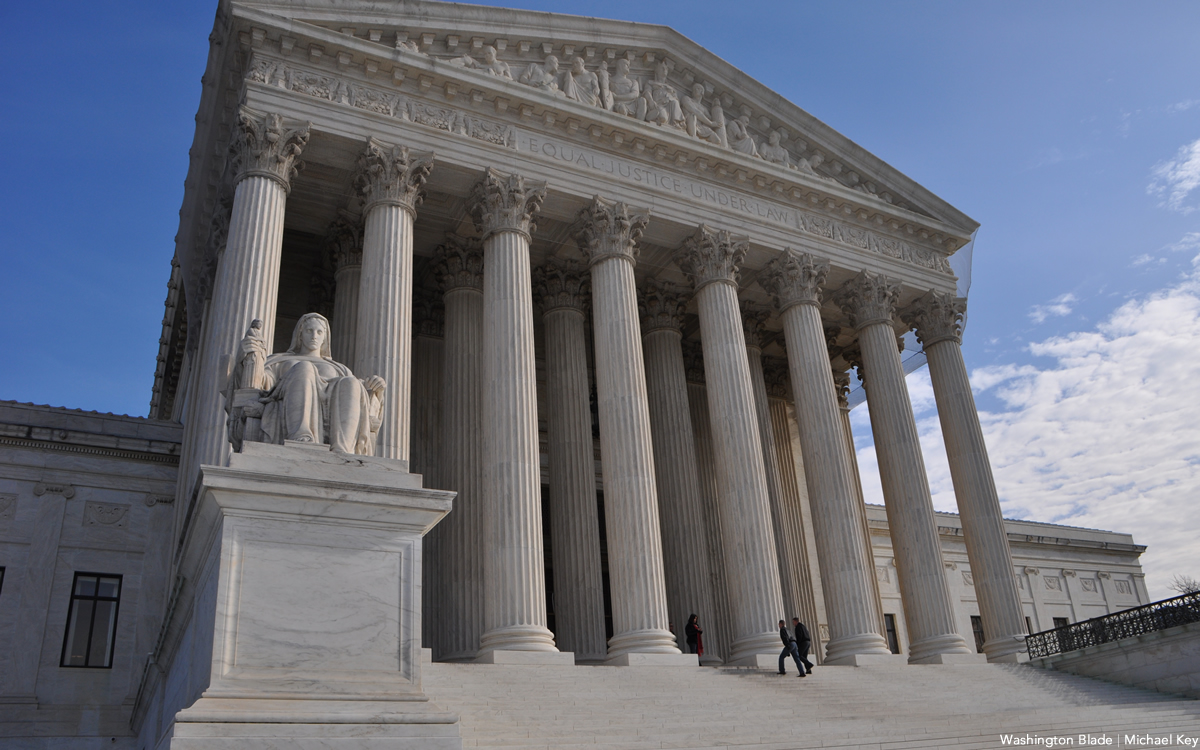
As soon as the final votes are cast and counted and verified after the November 2026 elections are over, the 2028 presidential cycle will begin in earnest. Polls, financial aid requests, and volunteer opportunities ad infinitum will flood the public and personal media. There will be more issues than candidates in both parties. The rending of garments and mudslinging will be both interesting and maybe even amusing as citizens will watch how candidates react to each and every issue of the day.
There is one particular item that I am hoping each candidate will be asked whether in private or in public. If a Supreme Court vacancy occurs in your potential administration, will you nominate an open and qualified LGBTQ to join the remaining eight?
Other interest groups on both sides have made similar demands over the years and have had them honored. Is it not time that our voices are raised as well? There are several already sitting judges on both state and federal benches that have either been elected statewide or approved by the U.S. Senate.
Our communities are being utilized and abused on judicial menus. Enough already! Challenge each and every candidate, regardless of their party with our honest question and see if honest answers are given. By the way … no harm in asking the one-third of the U.S. Senate candidates too who will be on ballots. Looking forward to any candidate tap dancing!
Opinions
2026 elections will bring major changes to D.C. government
Mayor’s office, multiple Council seats up for grabs
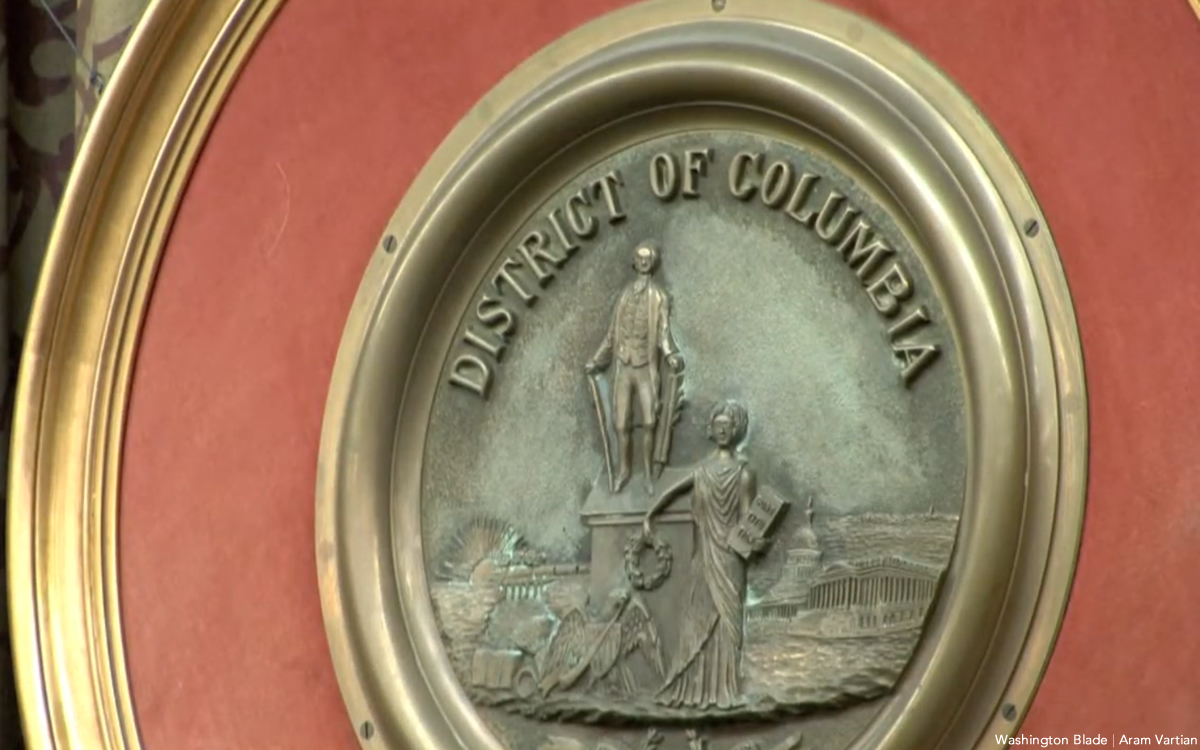
Next year will be a banner year for elections in D.C. The mayor announced she will not run. Two Council members, Anita Bonds, At-large, and Brianne Nadeau, Ward 1, have announced they will not run. Waiting for Del. Norton to do the same, but even if she doesn’t, there will be a real race for that office.
So far, Robert White, Council member at-large, and Brooke Pinto, Council member Ward 2, are among a host of others, who have announced. If one of these Council members should win, there would be a special election for their seat. If Kenyon McDuffie, Council member at-large, announces for mayor as a Democrat, which he is expected to do, he will have to resign his seat on the Council as he fills one of the non-Democratic seats there. Janeese George, Ward 4 Council member, announced she is running for mayor. Should she win, there would be a special election for her seat. Another special election could happen if Trayon White, Ward 8, is convicted of his alleged crimes, when he is brought to trial in January. Both the Council chair, and attorney general, have announced they are seeking reelection, along with a host of other offices that will be on the ballot.
Many of the races could look like the one in Ward 1 where at least six people have already announced. They include three members of the LGBTQ community. It seems the current leader in that race is Jackie Reyes Yanes, a Latina activist, not a member of the LGBTQ community, who worked for Mayor Fenty as head of the Latino Affairs Office, and for Mayor Bowser as head of the Office of Community Affairs. About eight, including the two Council members, have already announced they are running for the delegate seat.
I am often asked by candidates for an endorsement. The reason being my years as a community, LGBTQ, and Democratic, activist; and my ability to endorse in my column in the Washington Blade. The only candidate I endorsed so far is Phil Mendelson, for Council chair. While he and I don’t always agree on everything, he’s a staunch supporter of the LGBTQ community, a rational person, and we need someone with a steady hand if there really are six new Council members, out of the 13.
When candidates call, they realize I am a policy wonk. My unsolicited advice to all candidates is: Do more than talk in generalities, be specific and honest as to what you think you can do, if elected. Candidates running for a legislative office, should talk about what bills they will support, and then what new ones they will introduce. What are the first three things you will focus on for your constituents, if elected. If you are running against an incumbent, what do you think you can do differently than the person you hope to replace? For any new policies and programs you propose, if there is a cost, let constituents know how you intend to pay for them. Take the time to learn the city budget, and how money is currently being spent. The more information you have at your fingertips, the smarter you sound, and voters respect that, at least many do. If you are running for mayor, you need to develop a full platform, covering all the issues the city will face, something I have helped a number of previous mayors do. The next mayor will continue to have to deal with the felon in the White House. He/she/they will have to ensure he doesn’t try to eliminate home rule. The next mayor will have to understand how to walk a similar tightrope Mayor Bowser has balanced so effectively.
Currently, the District provides lots of public money to candidates. If you decide to take it, know the details. The city makes it too easy to get. But while it is available, take advantage of it. One new variable in this election is the implementation of rank-choice voting. It will impact how you campaign. If you attack another candidate, you may not be the second, or even third, choice, of their strongest supporters.
Each candidate needs a website. Aside from asking for donations and volunteers, it should have a robust issues section, biography, endorsements, and news. One example I share with candidates is my friend Zach Wahls’s website. He is running for United States Senate from Iowa. It is a comprehensive site, easy to navigate, with concise language, and great pictures. One thing to remember is that D.C. is overwhelmingly Democratic. Chances are the winner of the Democratic primary will win the general election.
Potential candidates should read the DCBOE calendar. Petitions will be available at the Board of Elections on Jan. 23, with the primary on June 16th, and general election on Nov. 3. So, ready, set, go!
Peter Rosenstein is a longtime LGBTQ rights and Democratic Party activist.
-

 Politics5 days ago
Politics5 days agoLGBTQ Democrats say they’re ready to fight to win in 2026
-

 District of Columbia4 days ago
District of Columbia4 days agoBrian Footer suspends campaign for Ward 1 D.C. Council seat
-

 Opinions5 days ago
Opinions5 days agoLighting candles in a time of exhaustion
-

 Opinions4 days ago
Opinions4 days ago2026 elections will bring major changes to D.C. government

